The Exciting World of Contemporary Ceramic Sculpture
Welcome to the vibrant and ever-evolving realm of contemporary ceramic sculpture! This art form is not just about clay and glaze; it's a dynamic expression of culture, identity, and innovation. Imagine stepping into a gallery filled with stunning pieces that seem to tell stories of their own—each sculpture a unique blend of tradition and modernity. From the ancient practices that laid the groundwork to the bold, avant-garde creations of today, ceramic sculpture has come a long way. It's like watching a thrilling movie unfold, where each scene reveals new dimensions and unexpected twists.
In recent years, artists have been pushing the boundaries of what ceramic art can be. They are not merely crafting pots or plates; they are creating thought-provoking installations that challenge societal norms and provoke deep reflection. The world of contemporary ceramic sculpture is a playground for the imagination, where artists experiment with form, texture, and color in ways that were previously unimaginable. It's as if each piece is a conversation starter, inviting viewers to engage, interpret, and connect on multiple levels.
The beauty of contemporary ceramic sculpture lies in its diversity. Artists from various backgrounds and cultures are contributing to this rich tapestry, each bringing their unique perspective to the table. Whether it's through traditional hand-building techniques or innovative glazing methods, the result is a stunning array of works that resonate with a wide audience. It's a celebration of creativity that transcends geographical boundaries and artistic styles.
In this article, we will delve deeper into the evolution of ceramic sculpture, explore the various techniques and materials used by contemporary artists, and highlight some of the influential figures shaping this exciting landscape. So, buckle up as we embark on this artistic journey that promises to be as enlightening as it is inspiring!
- What is contemporary ceramic sculpture? Contemporary ceramic sculpture refers to the modern practices and artistic expressions in the medium of ceramics, often incorporating innovative techniques and themes.
- How has ceramic sculpture evolved over time? Ceramic sculpture has evolved from ancient traditions to modern interpretations, influenced by cultural shifts and artistic movements.
- Who are some notable contemporary ceramic artists? Artists like Grayson Perry and Magdalene Odundo are known for their impactful works that challenge norms and celebrate culture.
- What techniques do contemporary ceramic artists use? Artists utilize a variety of techniques, including hand-building methods like coiling and pinching, as well as modern glazing techniques.
- Why is ceramics gaining recognition in contemporary art? The artistic value of ceramics has been increasingly recognized, leading to more exhibitions, installations, and a growing market for collectors.
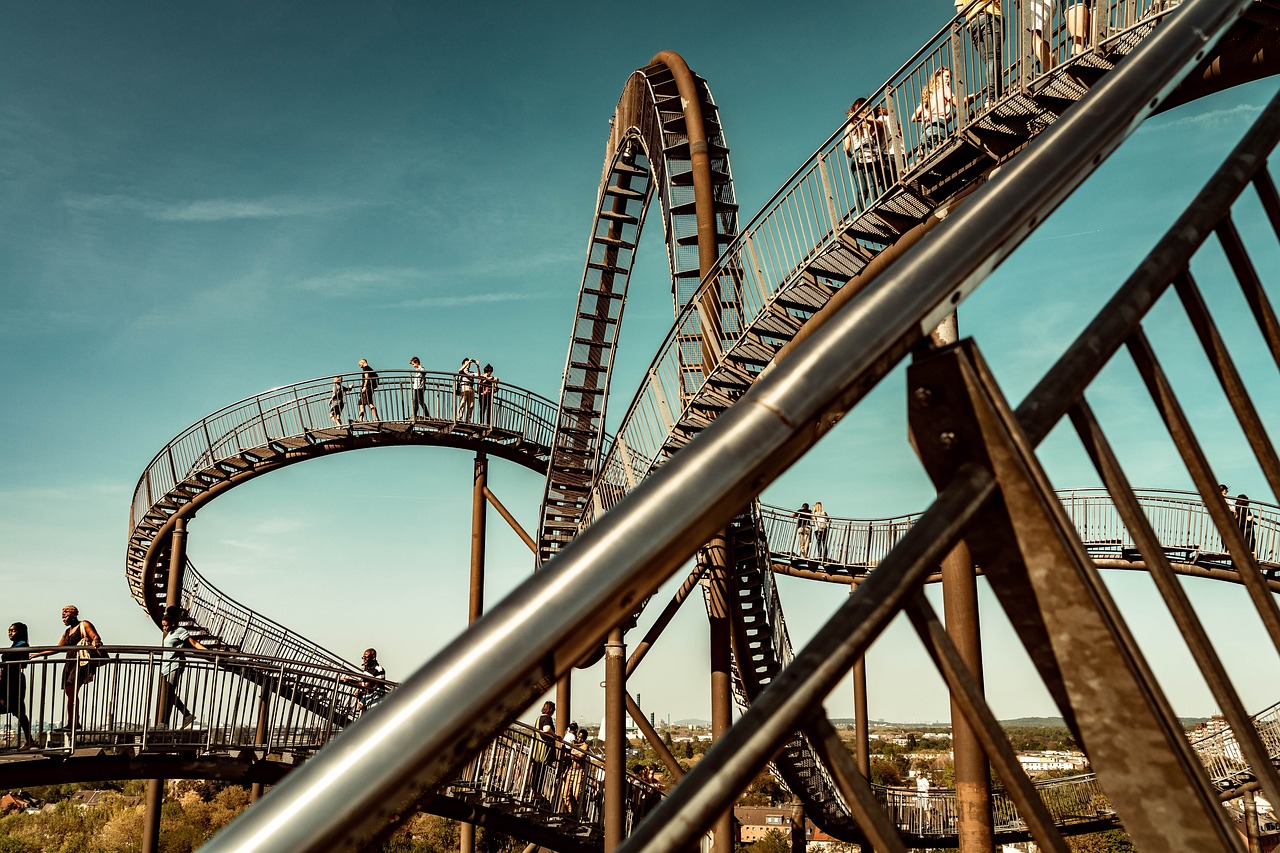
The Evolution of Ceramic Sculpture
This article explores the vibrant realm of contemporary ceramic sculpture, highlighting its evolution, techniques, and the innovative artists pushing boundaries within this captivating art form.
Understanding the historical context of ceramic sculpture reveals how it has transformed over the years, adapting to cultural shifts and artistic movements that have shaped its current form. From the ancient civilizations of Mesopotamia and Egypt, where clay was molded into functional pottery, to the intricate and expressive sculptures of today, the journey of ceramic art is rich and fascinating. Early ceramicists focused primarily on utility, creating vessels for storage and transport, but as societies evolved, so did their artistic expressions.
In the Renaissance, ceramic art began to flourish as artists started to experiment with glazes and decorative techniques, leading to the creation of stunning faience and majolica wares. This period marked a significant shift where ceramics were not just functional items but also objects of beauty and prestige. Fast forward to the 20th century, and we see a dramatic transformation in the perception of ceramics as artists began to explore more abstract forms and conceptual ideas. The rise of movements such as Modernism and Postmodernism encouraged artists to challenge traditional boundaries, leading to the emergence of ceramic sculpture as a respected art form.
Today, contemporary ceramic sculpture is a vibrant field where artists blend traditional techniques with modern aesthetics. This evolution has been fueled by a growing appreciation for the tactile qualities of clay and the unique possibilities it offers for artistic expression. Artists are now able to create pieces that are not only visually striking but also engage with themes such as identity, culture, and environmental issues.
To illustrate this evolution, let's consider a brief timeline of key developments in ceramic sculpture:
| Period | Key Developments |
|---|---|
| Ancient Civilizations | Functional pottery and early decorative techniques. |
| Renaissance | Introduction of glazes and decorative ceramics. |
| 20th Century | Modernism and Postmodernism challenge traditional forms. |
| Contemporary Era | Integration of cultural themes and innovative techniques. |
As we delve deeper into the realm of contemporary ceramic sculpture, it becomes evident that this art form is not merely about creating objects; it's about storytelling, cultural expression, and pushing the boundaries of what art can be. Each piece tells a story, reflecting the artist's journey and the societal context in which it was created. The evolution of ceramic sculpture is a testament to the enduring nature of this medium and its capacity to adapt and thrive in an ever-changing artistic landscape.
Contemporary ceramic artists employ a variety of techniques and materials, from traditional hand-building to modern glazing methods, creating unique textures and finishes that enhance their artistic expression.
Hand-building techniques, such as coiling and pinching, allow artists to manipulate clay freely, fostering creativity and individuality in each piece, while also connecting them to ancient practices.
The coiling technique involves stacking rolls of clay to create forms, offering artists the chance to explore organic shapes and intricate designs that can be both functional and sculptural.
Pinching is a simple yet effective method where artists shape clay by hand, resulting in tactile, intimate pieces that reflect the artist's touch and personal style.
Innovative glazing techniques have revolutionized the aesthetic possibilities of ceramic sculpture, allowing artists to experiment with color, sheen, and surface effects that enhance their work's visual appeal.
Examining the works of key contemporary ceramic artists reveals diverse approaches and philosophies, showcasing how individual vision can influence the broader landscape of ceramic sculpture.
Grayson Perry's provocative work challenges societal norms and explores identity, using ceramic as a medium to convey complex narratives that resonate with a wide audience.
Magdalene Odundo's sculptural forms draw from African heritage, combining traditional techniques with contemporary aesthetics to create pieces that celebrate culture and craftsmanship.
Ceramics have gained significant recognition in the contemporary art scene, often featured in galleries and exhibitions, reflecting a shift in perception regarding the medium's artistic value and potential.
Ceramic sculptures are increasingly showcased in major art exhibitions, where artists create immersive installations that invite viewers to engage with the material and concept on a deeper level.
The growing interest in ceramic art has led to a rise in collectors and curators specializing in this medium, fostering a vibrant market that supports emerging talents and established artists alike.
- What is contemporary ceramic sculpture? Contemporary ceramic sculpture refers to the modern artistic practice of creating three-dimensional forms using clay, often emphasizing aesthetic value and conceptual themes.
- How has ceramic sculpture evolved over time? Ceramic sculpture has evolved from functional pottery in ancient times to a respected art form that incorporates innovative techniques and addresses contemporary issues.
- Who are some influential contemporary ceramic artists? Notable artists include Grayson Perry and Magdalene Odundo, both of whom explore unique themes and techniques in their work.
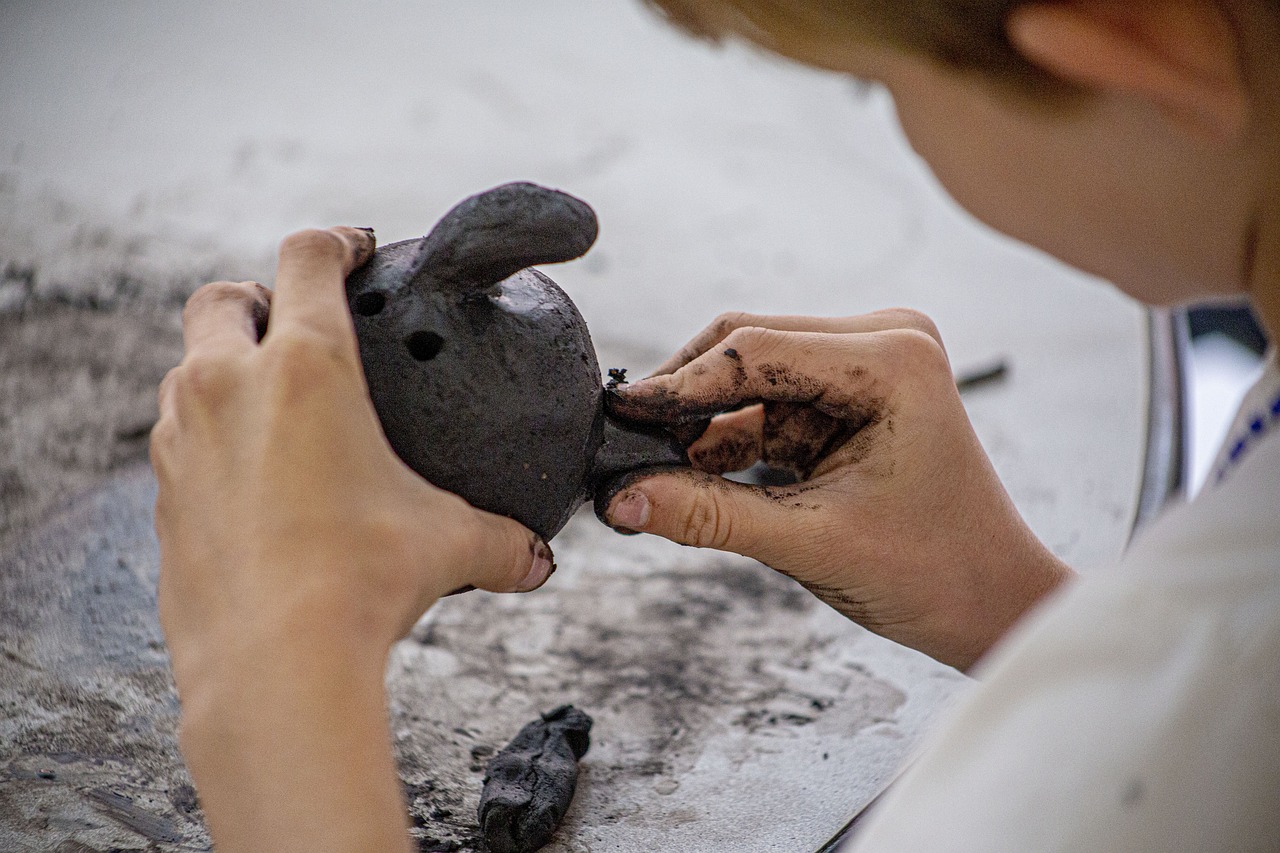
Techniques and Materials
When diving into the realm of contemporary ceramic sculpture, one cannot overlook the diverse techniques and materials that artists harness to breathe life into their creations. These methods are not merely tools; they are the very essence of expression, allowing artists to convey their unique visions. From the ancient traditions of hand-building to the cutting-edge innovations in glazing, the journey of a ceramic piece is as intricate as the work itself.
At the heart of ceramic sculpture is the clay itself, a versatile medium that has been sculpted and shaped for thousands of years. Artists today have access to a variety of clays, each with its own characteristics. For instance, stoneware is known for its durability and ability to withstand high temperatures, while earthenware offers a more porous finish, ideal for vibrant glazes. The choice of clay can significantly influence the final appearance and functionality of the artwork.
Contemporary artists often employ a mix of both traditional and modern techniques, creating a fusion that not only respects the past but also embraces the future. Hand-building methods stand out as a favorite among many artists. Techniques such as coiling and pinching allow for a personal touch, enabling each artist to infuse their work with a sense of individuality. Imagine the tactile experience of shaping clay with your own hands, feeling the material yield to your will, much like a sculptor chiseling away at stone.
Hand-building techniques are not just about creating forms; they are about connecting with the material on a profound level. The coiling technique, for example, involves stacking rolls of clay to construct shapes that can be both functional and sculptural. This method opens up a world of possibilities, allowing artists to explore organic forms and intricate designs. Picture a delicate vase that seems to flow like water, each coil representing a moment of inspiration captured in clay.
On the other hand, the pinching technique offers a more intimate approach. Artists shape the clay by hand, pinching and pulling it into existence. This method results in pieces that are not only tactile but also imbued with the artist's unique touch. Each pinch tells a story, a whisper of the artist's journey through the creative process. The end result is often a collection of pieces that feel personal, almost like an extension of the artist themselves.
As we move into the realm of glazing, the aesthetic possibilities of ceramic sculpture expand dramatically. Modern glazing techniques have revolutionized how artists approach color and texture. From glossy finishes to matte surfaces, the choices are endless. Artists can experiment with layering glazes, creating depth and complexity that draw the viewer's eye. Imagine a sculpture that shifts in appearance as light dances across its surface, revealing hidden layers of color and texture.
Some artists even incorporate unconventional materials into their glazing processes, such as ash or metal oxides, pushing the boundaries of what is possible. This experimentation not only enhances the visual appeal of their work but also invites the viewer to engage with the piece on a sensory level. The interplay of light and color, texture and form, creates a dynamic experience that transcends traditional notions of ceramic art.
In conclusion, the techniques and materials employed in contemporary ceramic sculpture are as varied as the artists themselves. Each choice reflects a deeper narrative, a connection to both history and innovation. As we continue to explore this vibrant field, we find that the possibilities are as limitless as the imagination of those who dare to create.
- What types of clay are commonly used in ceramic sculpture? Artists often use stoneware, earthenware, and porcelain, each offering unique properties that affect the final piece.
- How do modern glazing techniques differ from traditional ones? Modern techniques often involve innovative materials and methods that allow for greater experimentation with color and texture.
- Can ceramic sculptures be functional? Yes, many contemporary ceramic sculptures are designed to be both aesthetically pleasing and functional, such as vases or bowls.
- Who are some notable contemporary ceramic artists? Artists like Grayson Perry and Magdalene Odundo are known for their impactful work in the field.
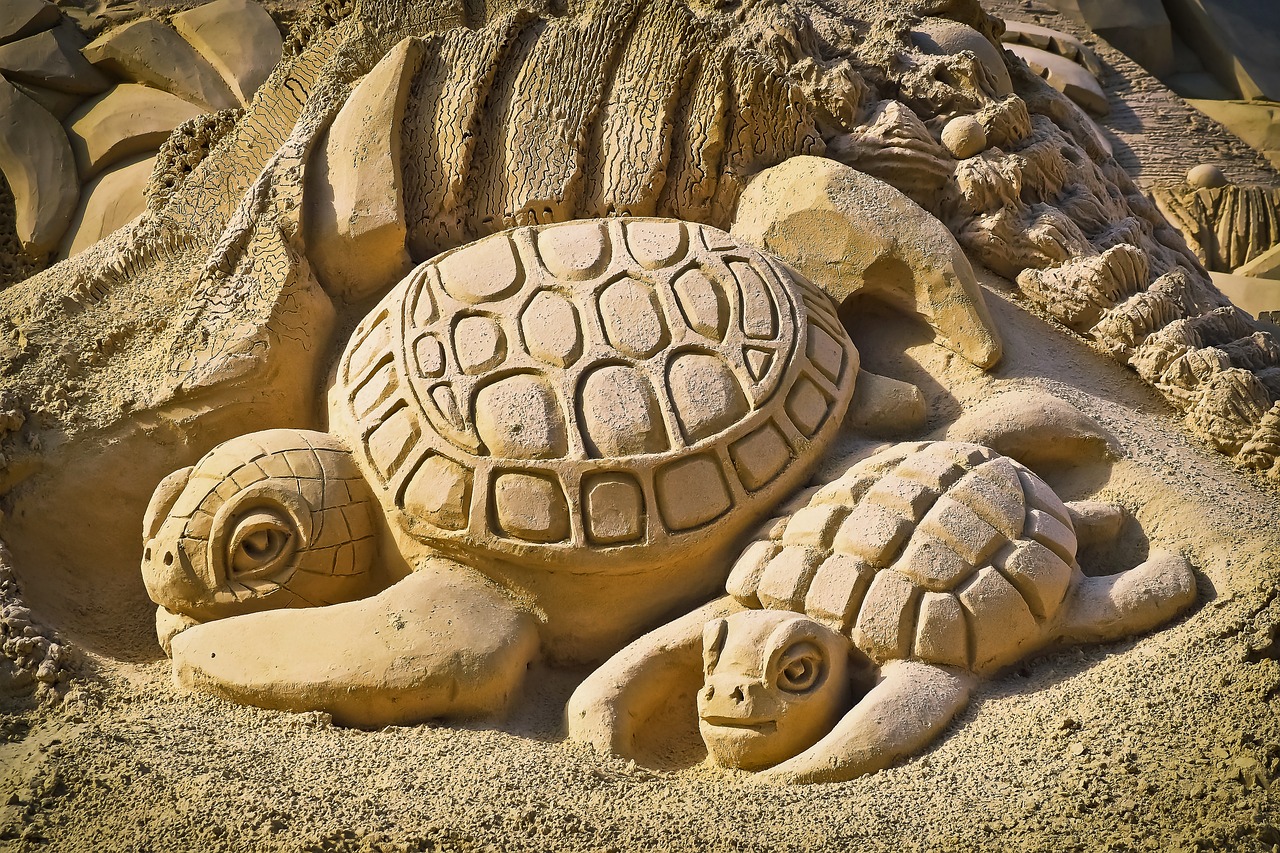
Hand-Building Methods
Hand-building methods are the heart and soul of contemporary ceramic sculpture, offering artists a unique way to express their creativity. Unlike wheel-throwing, which relies on a mechanical process, hand-building allows for a deeply personal touch. It’s like cooking from scratch versus using a pre-packaged meal; the former gives you complete control over the ingredients and outcome, resulting in something truly unique. Artists can explore various techniques, including coiling and pinching, which not only showcase their skills but also connect them to ancient traditions that have stood the test of time.
The coiling technique, for instance, is a fascinating method where artists roll out long strands of clay and stack them to form shapes. This technique is particularly appealing because it encourages a sense of fluidity and organic form. Imagine sculpting a delicate vine or a twisting tree trunk; the possibilities are endless! The process allows for intricate designs that can be both functional, like bowls or vases, and purely sculptural, inviting viewers to appreciate the beauty of the form itself.
On the other hand, the pinching technique is equally captivating yet simpler in its approach. Artists take a lump of clay and shape it by pinching and pulling, creating tactile forms that invite touch. This method embodies intimacy; each pinch reflects the artist's hand, making every piece a personal statement. It’s like a handwritten letter compared to a typed one—there’s something special about the imperfections and nuances that come from human touch. The resulting pieces often carry a sense of warmth and character that resonates with viewers.
Both coiling and pinching not only allow for creative freedom but also serve as a bridge connecting contemporary artists to their cultural roots. These techniques have been used for centuries across various cultures, and by employing them, modern artists pay homage to their heritage while infusing their work with fresh perspectives. In a world that often feels fast-paced and impersonal, hand-building methods remind us of the beauty of craftsmanship and the stories embedded in each piece of clay.
As we explore the realm of contemporary ceramic sculpture, it’s clear that these hand-building techniques are not just about creating objects; they are about forging connections—between the artist and the material, the past and the present, and ultimately, between the artwork and its audience.
- What is hand-building in ceramics? Hand-building is a technique used in ceramics where artists create forms without the use of a potter's wheel, often using methods like coiling and pinching.
- What are the benefits of hand-building? Hand-building allows for greater creativity and individuality, enabling artists to connect with ancient practices while expressing their unique style.
- Can hand-built ceramics be functional? Yes! Many hand-built pieces can serve functional purposes, such as bowls, cups, and vases, while also being artistic sculptures.
- How do coiling and pinching differ? Coiling involves stacking rolled clay to create forms, while pinching involves shaping clay by hand to create tactile pieces.
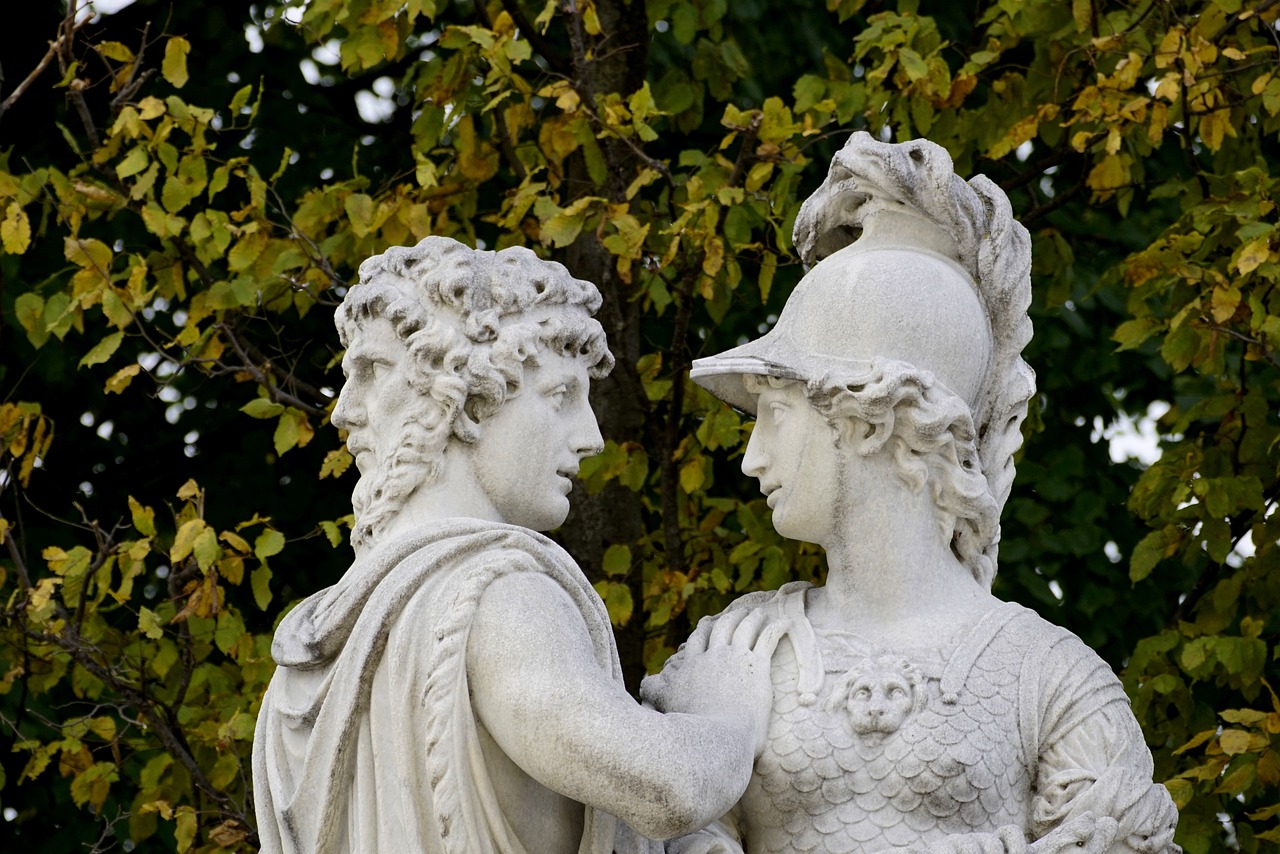
Coiling Technique
The is one of the oldest and most fascinating methods in the world of ceramic sculpture, allowing artists to create forms that are as unique as their imaginations. This technique involves rolling out long strands of clay, or coils, and stacking them to build up the desired shape. Imagine building a tower with soft, pliable dough; that’s the essence of coiling! This method not only encourages creativity but also fosters a deep connection to ancient practices, as it has been used for thousands of years across various cultures.
One of the most exciting aspects of the coiling technique is the freedom it provides. Artists can create anything from simple bowls to intricate sculptures that defy traditional forms. The process is inherently tactile, inviting the artist to engage with the clay intimately. As they work, they can manipulate the coils to create smooth, flowing lines or bold, angular shapes, giving each piece a distinct character. The resulting artworks often have a sense of movement and rhythm, as if they are alive and breathing.
Furthermore, the coiling technique allows for a variety of surface treatments and finishes. Artists can choose to leave the surface raw and textured, showcasing the natural beauty of the clay, or they can apply glazes to enhance the visual appeal. This versatility makes coiling an ideal technique for expressing personal style and artistic vision. It’s not just about creating a form; it’s about telling a story through the material.
In addition to its aesthetic benefits, the coiling technique also promotes sustainability in art. By using hand-building methods like coiling, artists can minimize waste compared to mass-produced ceramics. This aspect resonates with many contemporary artists who are increasingly aware of their environmental impact and are seeking ways to create more responsibly.
Ultimately, the coiling technique embodies the spirit of contemporary ceramic sculpture—an art form that is both ancient and modern, personal yet universal. It encourages artists to push boundaries, explore new ideas, and connect with their audience in profound ways. Whether you’re a seasoned ceramicist or a curious newcomer, the coiling technique offers endless possibilities for creativity and expression.
- What is the coiling technique in ceramics? The coiling technique involves rolling out long strands of clay and stacking them to create various forms, allowing for unique shapes and textures.
- Is coiling an ancient technique? Yes, coiling is one of the oldest methods of ceramic construction, used for thousands of years in many cultures around the world.
- What are the benefits of using the coiling technique? This technique promotes creativity, allows for personal expression, and can be more sustainable compared to mass production methods.
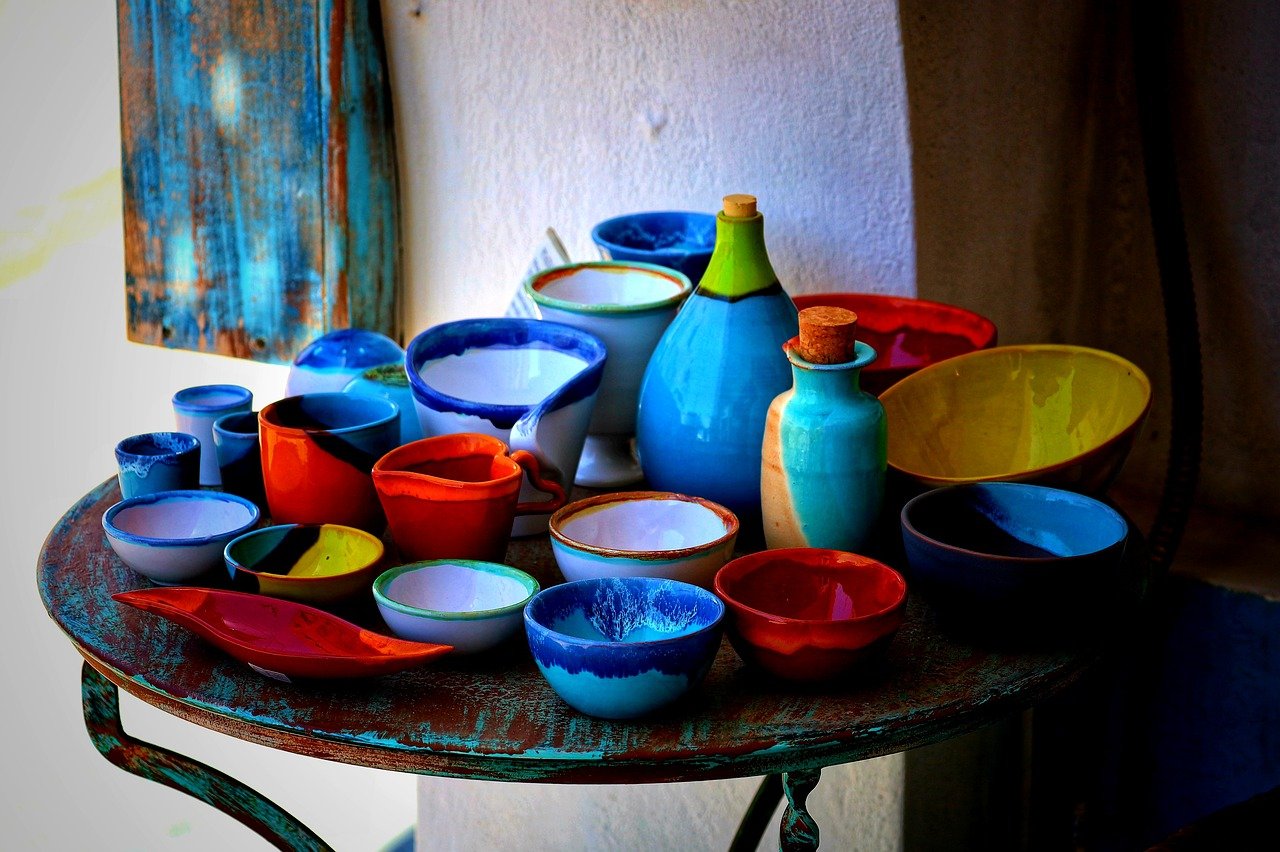
Pinching Technique
The is one of the most ancient and intuitive methods of shaping clay, and it's as simple as it is profound. Imagine taking a lump of clay and gently squeezing it between your fingers; that’s the essence of pinching. This technique allows artists to create forms that are not just visually striking but also imbued with a personal touch. Each pinch, each fold, and each curve tells a story—an intimate dialogue between the artist and the material.
What makes pinching particularly fascinating is its accessibility. Artists of all skill levels can experiment with it, making it a popular choice in both educational settings and professional studios. The method encourages exploration and spontaneity, allowing for organic shapes that might not emerge from more rigid techniques. As the artist pinches and molds, they can feel the clay’s response, which is akin to a conversation where both parties influence the outcome.
Moreover, the tactile nature of pinching fosters a unique connection between the artist and their work. Each piece created through this method reflects the artist's individual style and emotional state. The resulting forms can range from simple bowls to intricate sculptural pieces, showcasing a variety of textures and surfaces. The beauty of pinching lies in its ability to produce pieces that are not only functional but also serve as expressive works of art.
In the world of contemporary ceramic sculpture, pinching has evolved beyond its traditional roots. Artists are now combining this technique with modern approaches to create innovative works that challenge conventional ideas about ceramics. For instance, some artists might incorporate other materials or technologies, blurring the lines between sculpture and functional art. This fusion of old and new is what keeps the medium vibrant and exciting.
Here’s a quick overview of the benefits and characteristics of the pinching technique:
| Characteristic | Benefit |
|---|---|
| Intuitive Process | Encourages creativity and spontaneity |
| Personal Touch | Results in unique, one-of-a-kind pieces |
| Accessibility | Suitable for artists of all skill levels |
| Organic Shapes | Allows for freeform designs that evoke emotion |
In conclusion, the pinching technique is a testament to the beauty of simplicity in art. It invites artists to embrace their instincts and connect deeply with their materials, resulting in pieces that resonate on multiple levels. Whether you're a budding artist or an experienced ceramist, exploring pinching can open up new avenues of creativity and expression.
- What is the pinching technique in ceramics?
The pinching technique involves shaping clay by hand, where the artist pinches, squeezes, and molds the material to create various forms. - Is pinching suitable for beginners?
Absolutely! The pinching technique is very accessible and encourages experimentation, making it ideal for beginners. - Can I use pinching for functional pottery?
Yes, many artists create functional pieces like bowls and cups using the pinching method, blending utility with artistry. - How does pinching differ from other techniques?
Unlike wheel throwing or slab building, pinching is more tactile and allows for spontaneous, organic forms that reflect the artist's personal touch.
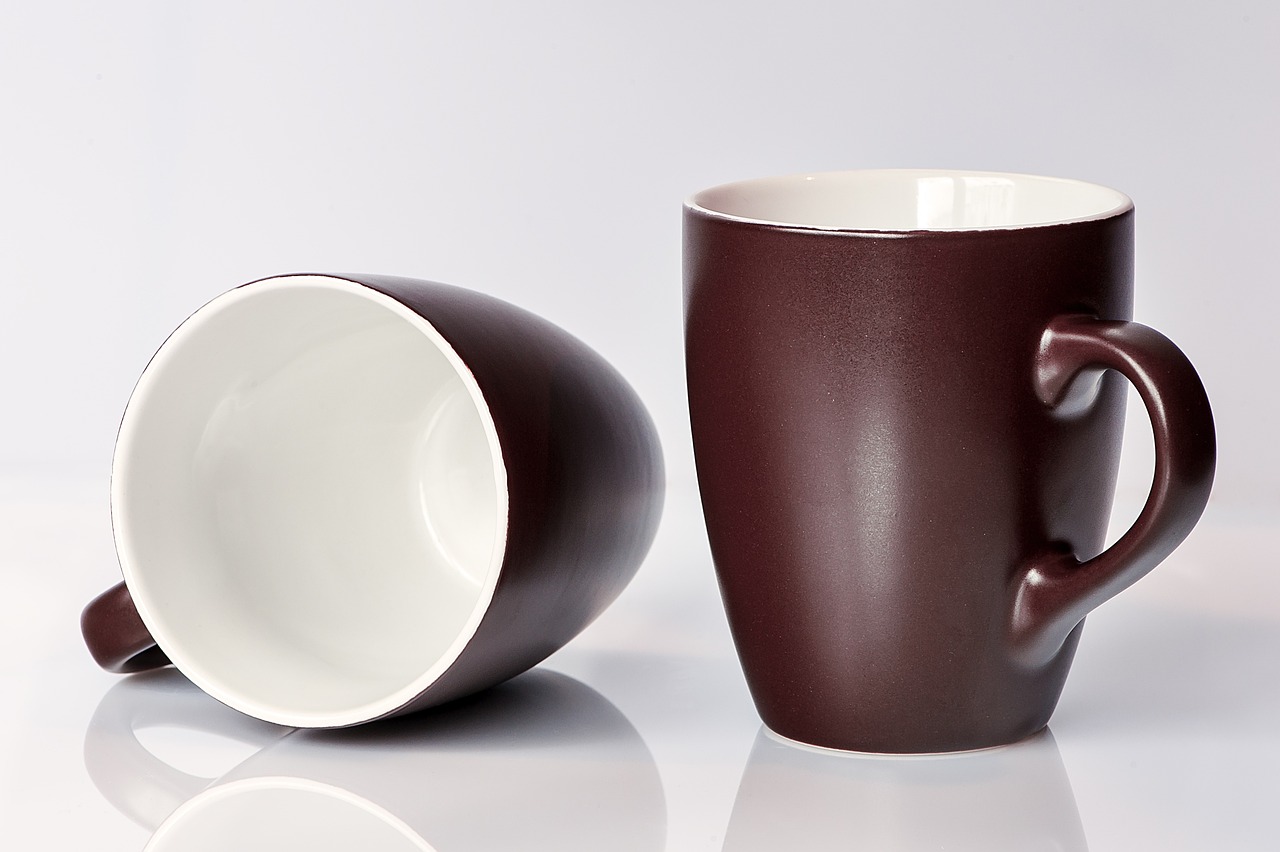
Modern Glazing Techniques
In the realm of contemporary ceramic sculpture, glazing techniques have undergone a remarkable transformation, paving the way for artists to explore a new world of visual possibilities. Gone are the days when glazing was merely a protective layer; today, it serves as an integral part of the artistic expression. With advancements in technology and a deeper understanding of materials, artists can now manipulate glazes to achieve stunning effects that captivate the viewer's eye.
One of the most exciting aspects of modern glazing is the variety of materials and methods available. Artists are no longer confined to traditional glazes; they are experimenting with underglazes, engobes, and even alternative materials like ash and slip. This experimentation leads to unique textures and finishes that can resemble anything from glossy surfaces to earthy matte finishes. The choice of glaze can completely transform a piece, enhancing its depth and character.
Furthermore, the use of layering techniques has gained popularity among contemporary artists. By applying multiple layers of different glazes, artists can create intricate patterns and depth that add a dynamic quality to their sculptures. This method not only showcases the artist's technical skill but also invites viewers to appreciate the complexity of the work from various angles. Imagine a sculpture that changes its appearance as you move around it, revealing new colors and textures with each shift in perspective!
Another fascinating trend is the incorporation of digital technology in glazing. Some artists are using digital printing techniques to apply designs directly onto their ceramic pieces, allowing for precise and vibrant imagery that was once difficult to achieve. This fusion of technology and traditional craft opens up a new dialogue about what ceramic art can be, challenging our perceptions and expanding the boundaries of creativity.
To illustrate the impact of modern glazing techniques, consider the following table that summarizes some of the most popular glazing methods used today:
| Glazing Technique | Description | Visual Effect |
|---|---|---|
| Layering | Applying multiple layers of different glazes. | Creates depth and intricate patterns. |
| Digital Printing | Using digital technology to print designs onto ceramics. | Vibrant and precise imagery. |
| Raku | A Japanese technique involving rapid heating and cooling. | Unique crackle effects and metallic lusters. |
| Engobe | A colored slip applied to clay before glazing. | Allows for detailed surface decoration. |
As we delve deeper into the world of contemporary ceramic sculpture, it's clear that modern glazing techniques are not just about aesthetics; they are a means for artists to convey their messages and emotions. The way a glaze interacts with light, texture, and form can evoke feelings and provoke thought, making it an essential component of the overall artistic experience.
- What is the purpose of glazing in ceramics? Glazing not only adds color and texture to ceramic pieces but also provides a protective layer that makes the sculpture more durable.
- Can I create my own glazes? Yes! Many artists experiment with creating their own glazes using various materials, allowing for unique results.
- How does temperature affect glazing? The temperature at which ceramics are fired can drastically change the appearance of glazes, affecting their color and texture.
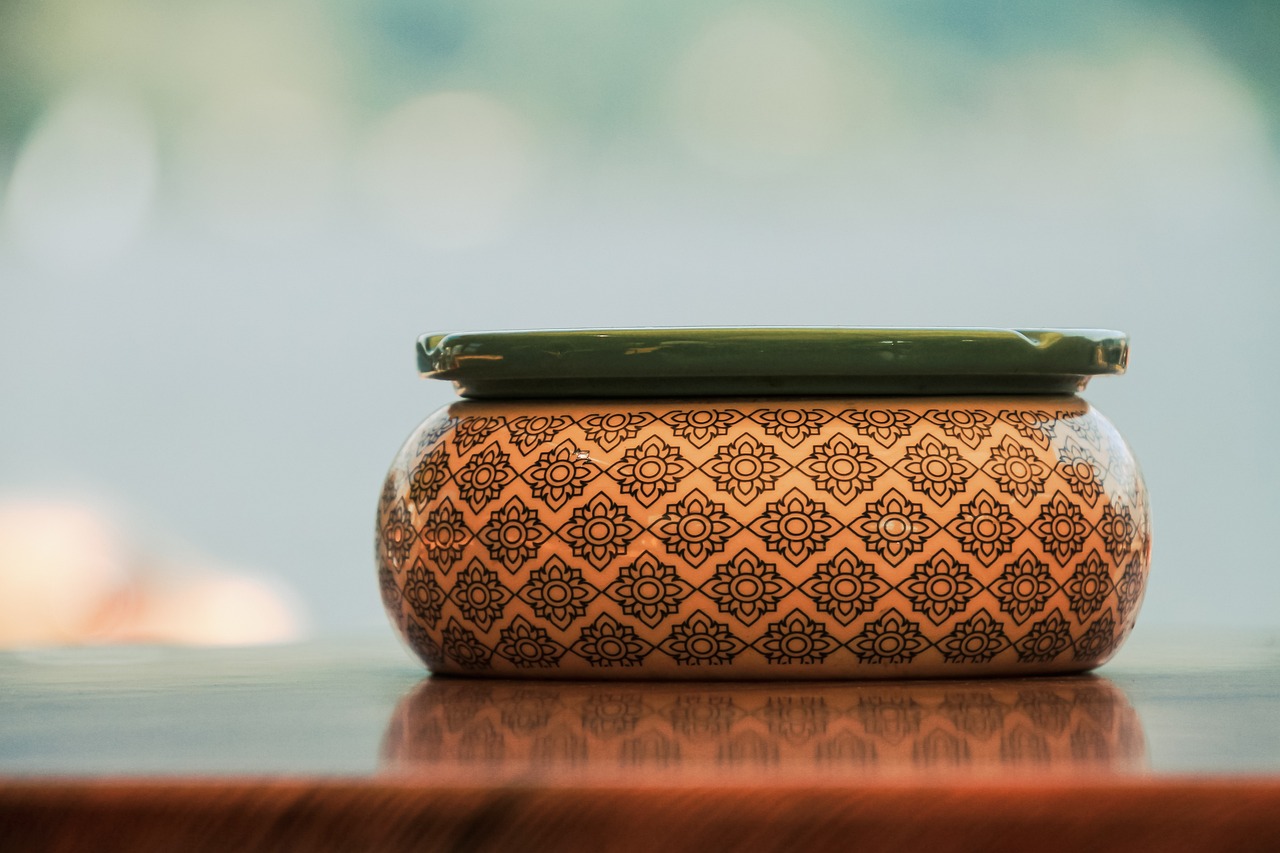
Influential Contemporary Artists
When diving into the vibrant world of contemporary ceramic sculpture, it’s impossible not to acknowledge the influential artists who are redefining the medium. These artists are not just creators; they are visionaries who use clay as a canvas to express their unique perspectives and challenge societal norms. Their work often reflects personal narratives, cultural heritage, and innovative techniques that push the boundaries of what ceramic art can be. Let's explore a couple of these remarkable figures who are making waves in the art scene today.
One of the most provocative voices in contemporary ceramics is Grayson Perry. Known for his vibrant, often controversial works, Perry uses ceramics to explore themes of identity, gender, and societal norms. His pieces often feature intricate narratives that challenge the viewer's perceptions and provoke thought. For instance, his famous vase series combines traditional ceramic techniques with modern storytelling, allowing each piece to serve as a commentary on contemporary life. Perry's ability to blend craftsmanship with social critique has not only garnered him numerous accolades but also a dedicated following.
Another luminary in the field is Magdalene Odundo, whose work is deeply rooted in her African heritage. Odundo’s sculptural forms are a beautiful fusion of traditional techniques and contemporary aesthetics. She often employs ancient methods of hand-building to create vessels that are as much about cultural expression as they are about artistic innovation. Each piece tells a story, celebrating the rich traditions of her ancestry while inviting viewers to engage with the material in a modern context. Her work has been showcased in prominent galleries worldwide, further highlighting the significance of her contributions to the ceramic art landscape.
These artists exemplify the diverse approaches within contemporary ceramic sculpture. Their work not only enriches the art world but also inspires emerging artists to explore their own identities and narratives through the medium of clay. By showcasing their unique perspectives, they encourage a broader appreciation for ceramics as a vital form of contemporary art.
As we delve deeper into the world of contemporary ceramic sculpture, several questions often arise. Here are some of the most frequently asked questions regarding this captivating art form:
- What defines contemporary ceramic sculpture? Contemporary ceramic sculpture is characterized by its innovative use of materials and techniques, often reflecting current cultural and social themes.
- How do contemporary artists choose their subjects? Many contemporary ceramic artists draw inspiration from personal experiences, cultural backgrounds, and societal issues, allowing them to create meaningful narratives within their work.
- What techniques are commonly used in contemporary ceramics? Techniques such as hand-building, glazing, and firing methods are commonly employed, with artists often experimenting to achieve unique textures and finishes.
- Where can I see contemporary ceramic sculptures? Contemporary ceramic sculptures are frequently exhibited in galleries, museums, and art fairs, showcasing the work of both established and emerging artists.
In conclusion, the world of contemporary ceramic sculpture is a dynamic and evolving landscape, enriched by the contributions of talented artists like Grayson Perry and Magdalene Odundo. Their innovative approaches and unique perspectives continue to inspire audiences and future generations of artists alike.
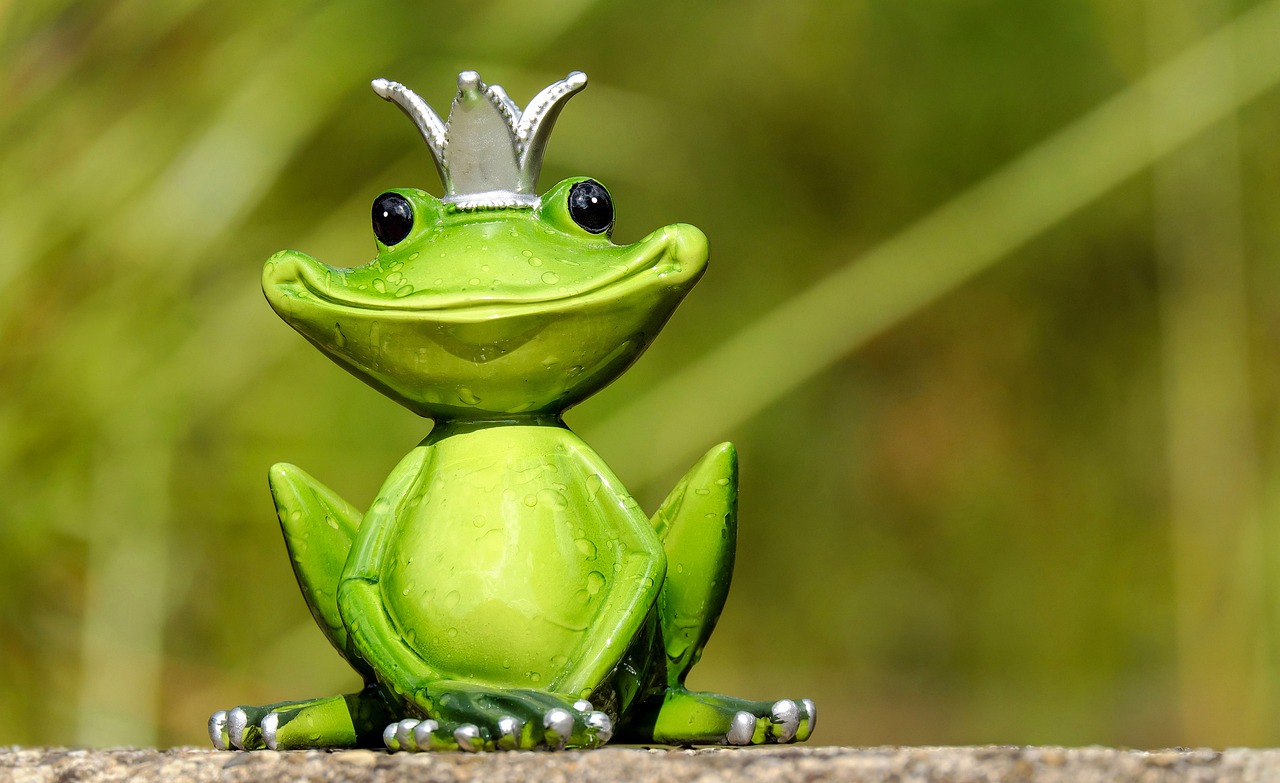
Artist Spotlight: Grayson Perry
Grayson Perry is a name that resonates profoundly in the world of contemporary ceramic sculpture. Known for his striking and often provocative works, Perry uses ceramics not just as a medium, but as a canvas for exploring complex themes such as identity, gender, and societal norms. His pieces often challenge the viewer's perceptions, inviting them to engage in a dialogue about the narratives woven into his art.
Perry's journey as an artist is as colorful as the ceramics he creates. He often draws from his own life experiences, infusing his work with a personal touch that makes it relatable and thought-provoking. For instance, he blends traditional ceramic techniques with modern storytelling, crafting pieces that are both visually stunning and rich in meaning. One of his most famous works, the Hindu God of the Modern World, showcases a vibrant tapestry of cultural references, challenging the viewer to reconsider their understanding of spirituality in a contemporary context.
What sets Perry apart is his ability to blur the lines between high art and craft. He often embraces the notion of ceramics as a medium that is traditionally associated with domesticity, flipping this stereotype on its head. By doing so, he elevates ceramics to a form of serious artistic expression, pushing boundaries and expanding the possibilities of what ceramic art can be. His work is not just about aesthetics; it’s about the stories that each piece tells, the conversations it sparks, and the emotions it evokes.
In addition to his ceramics, Perry is also known for his public persona, often appearing in a dress and embracing his identity as a transgender man. This bold choice further enriches his artistic narrative, as he uses his platform to discuss issues surrounding gender and identity. His art becomes a reflection of his life, and in turn, invites others to explore their own identities and experiences.
Through exhibitions and installations, Perry's work has gained international acclaim, and his pieces are highly sought after by collectors. As the art world continues to evolve, artists like Grayson Perry are at the forefront, reminding us that ceramics can be a powerful medium for social commentary and personal expression.
In summary, Grayson Perry is not just a ceramic artist; he is a storyteller, a provocateur, and an innovator. His contributions to contemporary ceramic sculpture are invaluable, pushing the medium into new territories and challenging us to think critically about the world around us.
- What themes does Grayson Perry explore in his work?
Perry often delves into themes of identity, gender, and societal norms, using his ceramics as a medium for storytelling. - How does Grayson Perry's background influence his art?
His personal experiences and cultural background play a significant role in shaping his artistic narrative, making his work relatable and impactful. - What is the significance of ceramics in contemporary art?
Ceramics have gained recognition as a serious art form, with artists like Perry elevating the medium to explore complex themes and societal issues.

Artist Spotlight: Magdalene Odundo
Magdalene Odundo is a name that resonates deeply within the realm of contemporary ceramic sculpture. Born in Kenya and now based in the UK, Odundo's work is a beautiful fusion of her African heritage and modern artistic sensibilities. Her pieces are not just vessels; they are narratives—each telling a story that transcends time and culture. With a unique approach that combines traditional methods with contemporary aesthetics, Odundo has carved a niche for herself in the art world, captivating audiences with her stunning creations.
One of the most striking aspects of Odundo's work is her commitment to craftsmanship. She employs traditional hand-building techniques, which allow her to maintain a deep connection with the clay. This intimate process not only honors ancient practices but also fosters a sense of individuality in her work. Odundo often draws inspiration from the natural world, using organic forms and flowing lines that echo the beauty of her surroundings. Her sculptures are characterized by their smooth surfaces and elegant silhouettes, inviting viewers to touch and engage with them on a sensory level.
Odundo's artistic journey is a testament to the power of cultural identity. She often reflects on her experiences and the rich traditions of her upbringing, infusing her work with a sense of heritage and meaning. For instance, her use of color and form is deeply influenced by African pottery, yet she skillfully integrates these elements into a contemporary context. This ability to bridge the gap between the past and the present is what makes her work so compelling and relevant today.
In addition to her stunning sculptures, Odundo is also known for her contributions to the art community through teaching and mentorship. She passionately shares her knowledge with aspiring artists, encouraging them to explore their own cultural narratives through ceramics. This dedication to nurturing the next generation of artists is a vital part of her legacy, as she believes in the importance of preserving and evolving the art form.
As we delve into the world of Magdalene Odundo, it becomes clear that her work is more than just art; it is a celebration of identity, culture, and the human experience. Her pieces challenge us to reflect on our own stories and connections to the world around us. Odundo's sculptures remind us that art has the power to unite us, transcending boundaries and inviting dialogue across different cultures.
In conclusion, Magdalene Odundo stands as a beacon of creativity and cultural expression in contemporary ceramic sculpture. Her innovative techniques and profound narratives continue to inspire and engage audiences worldwide, making her a pivotal figure in the evolution of this art form.
- What materials does Magdalene Odundo use for her sculptures?
Odundo primarily uses clay, employing traditional hand-building techniques to create her intricate forms. - How does Odundo's heritage influence her work?
Her African heritage deeply informs her artistic practice, inspiring her choice of shapes, colors, and narratives that reflect cultural traditions. - Is Magdalene Odundo involved in teaching?
Yes, Odundo actively teaches and mentors emerging artists, sharing her expertise and encouraging them to explore their own cultural narratives.

The Role of Ceramics in Contemporary Art
Ceramics have undergone a remarkable transformation in their perception and role within the contemporary art scene. Once relegated to the realms of craft and functional ware, ceramics are now celebrated as a legitimate and expressive medium for artistic exploration. This shift has opened up a plethora of opportunities for artists to experiment and innovate, pushing the boundaries of what ceramic art can represent. What was once seen merely as pottery has evolved into a dynamic form of expression that resonates with audiences around the globe.
One of the most exciting aspects of this evolution is the way ceramics have been integrated into various contemporary art movements. Artists are now utilizing clay not just as a material, but as a medium of communication, conveying complex themes and ideas through their sculptural forms. From abstract pieces that challenge our perceptions of shape and space to figurative works that tell poignant stories, ceramic art is a versatile tool for creative expression. The tactile nature of clay invites viewers to engage with the artwork on a sensory level, fostering a deeper connection to the piece.
Moreover, the inclusion of ceramics in major art exhibitions and galleries has significantly contributed to its rising status. Institutions that once primarily showcased painting and sculpture are now dedicating entire sections to ceramic works, highlighting the medium's artistic value. This recognition is crucial for artists who work with clay, as it elevates their status and underscores the importance of their contributions to the art world.
In addition to their presence in galleries, ceramic sculptures are increasingly featured in immersive installations, where they interact with other materials and forms. These installations often challenge traditional notions of space and context, inviting viewers to experience art in a more holistic manner. For instance, an artist might create a site-specific installation that incorporates ceramics alongside natural elements, creating a dialogue between the man-made and the organic. This interplay not only enhances the visual appeal but also encourages viewers to reflect on the relationship between art, nature, and the human experience.
The growing interest in ceramic art has also led to a rise in collectors and curators who specialize in this medium. Collecting ceramics is no longer just about acquiring beautiful objects; it has become a means of supporting artists and preserving cultural narratives. Curators are now increasingly focused on showcasing the diversity and richness of ceramic art, providing platforms for emerging talents while also honoring established artists. This vibrant market not only fosters creativity but also ensures that the voices of ceramic artists are heard and appreciated.
In conclusion, the role of ceramics in contemporary art is not just about the physical objects created; it encompasses a broader cultural and artistic dialogue. As artists continue to explore and innovate within this medium, ceramics will undoubtedly maintain their place as a vital and exciting component of the contemporary art landscape.
- What is contemporary ceramic sculpture? Contemporary ceramic sculpture refers to the modern practices of creating three-dimensional art pieces using clay and other ceramic materials, often characterized by innovative techniques and artistic concepts.
- How has the perception of ceramics changed in the art world? Ceramics have transitioned from being viewed solely as functional ware to being recognized as a significant form of artistic expression, often showcased in galleries and exhibitions.
- Who are some influential contemporary ceramic artists? Notable artists include Grayson Perry and Magdalene Odundo, who explore various themes and techniques in their work, pushing the boundaries of ceramic art.
- What techniques are commonly used in contemporary ceramic sculpture? Artists employ various techniques, including hand-building methods like coiling and pinching, as well as modern glazing methods to create unique textures and finishes.

Exhibitions and Installations
The realm of contemporary ceramic sculpture has witnessed a remarkable transformation in its presentation and appreciation through . No longer confined to the shelves of galleries or the corners of studios, ceramic art has taken center stage in a variety of venues, from traditional art galleries to unconventional spaces such as warehouses and outdoor parks. This shift not only highlights the versatility of ceramics but also enhances the viewer's experience by inviting them to engage with the art in a more immersive way.
One of the most exciting aspects of these exhibitions is the way artists create site-specific installations that respond to their surroundings. Imagine walking into a vast, empty space transformed by towering ceramic sculptures that seem to interact with the architecture itself. These installations often challenge the viewer's perception, encouraging them to explore the relationship between the artwork and the environment. For instance, a piece may incorporate elements of nature, such as soil or plants, seamlessly blending the organic with the crafted.
Moreover, contemporary exhibitions frequently feature a blend of traditional and modern techniques. Artists showcase their skills through dynamic installations that might include interactive components, allowing visitors to touch or even manipulate the artworks. This tactile engagement breaks down barriers, making the art more accessible and inviting. It’s akin to a dance between the viewer and the artist's vision, where each participant plays a role in the unfolding narrative of the artwork.
In recent years, there has been a notable increase in collaborative exhibitions that bring together multiple artists. These events often explore specific themes or concepts, creating a dialogue between different styles and perspectives. For example, a recent exhibition titled "Clay and Culture" featured a diverse group of ceramicists who each interpreted the theme through their unique lens, resulting in a rich tapestry of ideas and forms. Such collaborations not only enrich the artistic community but also foster a sense of belonging among artists and audiences alike.
To further illustrate the impact of exhibitions on the ceramic art scene, here’s a brief overview of some notable recent installations:
| Exhibition Name | Artist(s) | Location | Year |
|---|---|---|---|
| Clay and Culture | Various Artists | Art Center Gallery | 2023 |
| Earth and Fire | Grayson Perry | Contemporary Arts Museum | 2022 |
| Tradition Meets Modernity | Magdalene Odundo | National Gallery | 2021 |
As the landscape of contemporary ceramic sculpture continues to evolve, the role of exhibitions and installations becomes increasingly significant. They not only celebrate the creativity and craftsmanship of artists but also challenge societal perceptions of what ceramics can be. By stepping outside conventional boundaries, these exhibitions invite us to reconsider our relationship with art, encouraging us to see ceramics not just as functional objects but as powerful forms of expression that can provoke thought and inspire change.
- What is contemporary ceramic sculpture? Contemporary ceramic sculpture refers to the modern artistic practice of creating three-dimensional works from clay, incorporating both traditional and innovative techniques.
- How has the perception of ceramics changed in the art world? Ceramics have gained recognition as a legitimate art form, often showcased in galleries and exhibitions, reflecting a shift in appreciation for the medium's artistic value.
- Who are some influential contemporary ceramic artists? Notable artists include Grayson Perry and Magdalene Odundo, who explore diverse themes and techniques in their work.
- What are some techniques used in contemporary ceramic sculpture? Techniques include hand-building methods like coiling and pinching, as well as modern glazing techniques that enhance the visual appeal of the pieces.

Collecting and Curating Ceramics
Collecting and curating ceramics has become a thrilling adventure for art enthusiasts and investors alike. The ceramic art market is blossoming, with a growing number of collectors eager to discover unique pieces that speak to their personal tastes and aesthetic preferences. This trend reflects a broader recognition of ceramics as a legitimate and valuable art form, transcending its traditional utilitarian roots. Today, collectors are not just looking for beautiful objects; they seek pieces that tell a story, embody creativity, and showcase the artist's vision.
As the interest in ceramics continues to rise, many curators are stepping up to the plate, organizing exhibitions that highlight the artistic potential of this medium. They play a crucial role in shaping public perception and appreciation of ceramic art. Curators often focus on themes that resonate with contemporary issues, such as sustainability, identity, and cultural heritage, inviting audiences to engage with ceramics on a deeper level. This engagement is not just visual; it’s an experience that connects the viewer with the artist's intent and the cultural context of the work.
For those considering entering the world of ceramic collecting, it’s essential to understand what makes a piece valuable. Factors such as the artist's reputation, the uniqueness of the piece, and its artistic significance all contribute to its market value. Here are some key points to consider:
- Artist Background: Research the artist's history and previous works. Established artists often command higher prices, but emerging talents can offer unique opportunities for collectors.
- Rarity: Limited edition pieces or one-of-a-kind works tend to be more sought after.
- Condition: The condition of the ceramic piece is crucial. Chips, cracks, or repairs can significantly affect its value.
- Provenance: A piece with a documented history can enhance its desirability and value.
Moreover, the rise of online platforms dedicated to art sales has made it easier than ever for collectors to find and purchase ceramic artworks from around the globe. Websites and social media channels allow artists to showcase their work, giving collectors direct access to a diverse range of styles and techniques. This digital shift has democratized the art market, making it more accessible for new collectors to start their journeys.
In conclusion, collecting and curating ceramics is not just about acquiring objects; it’s about engaging with a living art form that continually evolves. As artists push boundaries and explore new techniques, collectors have the opportunity to be part of a vibrant community that celebrates creativity and innovation. Whether you are a seasoned collector or just dipping your toes into the world of ceramics, there’s no denying the excitement that comes with discovering a piece that resonates with you on a personal level.
- What should I look for when collecting ceramics? Focus on the artist's background, rarity, condition, and provenance of the piece.
- How can I determine the value of a ceramic piece? Research the artist and similar works, and consider the factors mentioned above.
- Where can I find ceramic art to collect? Look for local galleries, art fairs, and online platforms dedicated to ceramic art.
- Are there specific themes in contemporary ceramic art? Yes, many contemporary pieces explore themes such as identity, sustainability, and cultural heritage.
Frequently Asked Questions
- What is contemporary ceramic sculpture?
Contemporary ceramic sculpture refers to the modern artistic practice of creating three-dimensional forms using clay and other ceramic materials. It encompasses a wide range of styles, techniques, and concepts, often reflecting current cultural and social themes.
- How has ceramic sculpture evolved over time?
The evolution of ceramic sculpture can be traced through various historical periods, where it has adapted to different cultural influences and artistic movements. From ancient utilitarian objects to today's expressive art pieces, the transformation showcases the medium's versatility and growing recognition as a legitimate form of contemporary art.
- What techniques do contemporary ceramic artists use?
Contemporary ceramic artists employ a variety of techniques, including traditional hand-building methods like coiling and pinching, as well as modern glazing techniques. These methods allow for unique textures, finishes, and forms, giving each piece its own distinctive character.
- Who are some influential contemporary ceramic artists?
Some notable contemporary ceramic artists include Grayson Perry, known for his provocative narratives, and Magdalene Odundo, who blends traditional African techniques with modern aesthetics. Their works highlight the diverse approaches and philosophies that shape the current landscape of ceramic sculpture.
- What role do ceramics play in contemporary art?
Ceramics have gained significant traction in the contemporary art scene, often featured in galleries and major exhibitions. This shift in perception acknowledges ceramics as a valuable medium for artistic expression, showcasing its potential to engage audiences in innovative ways.
- How can I start collecting ceramic sculptures?
Starting a ceramic sculpture collection can be an exciting journey! Begin by researching artists and styles that resonate with you. Attend exhibitions, visit galleries, and connect with curators to discover emerging talents. Additionally, consider joining collector groups or forums to share insights and learn more about the market.



















